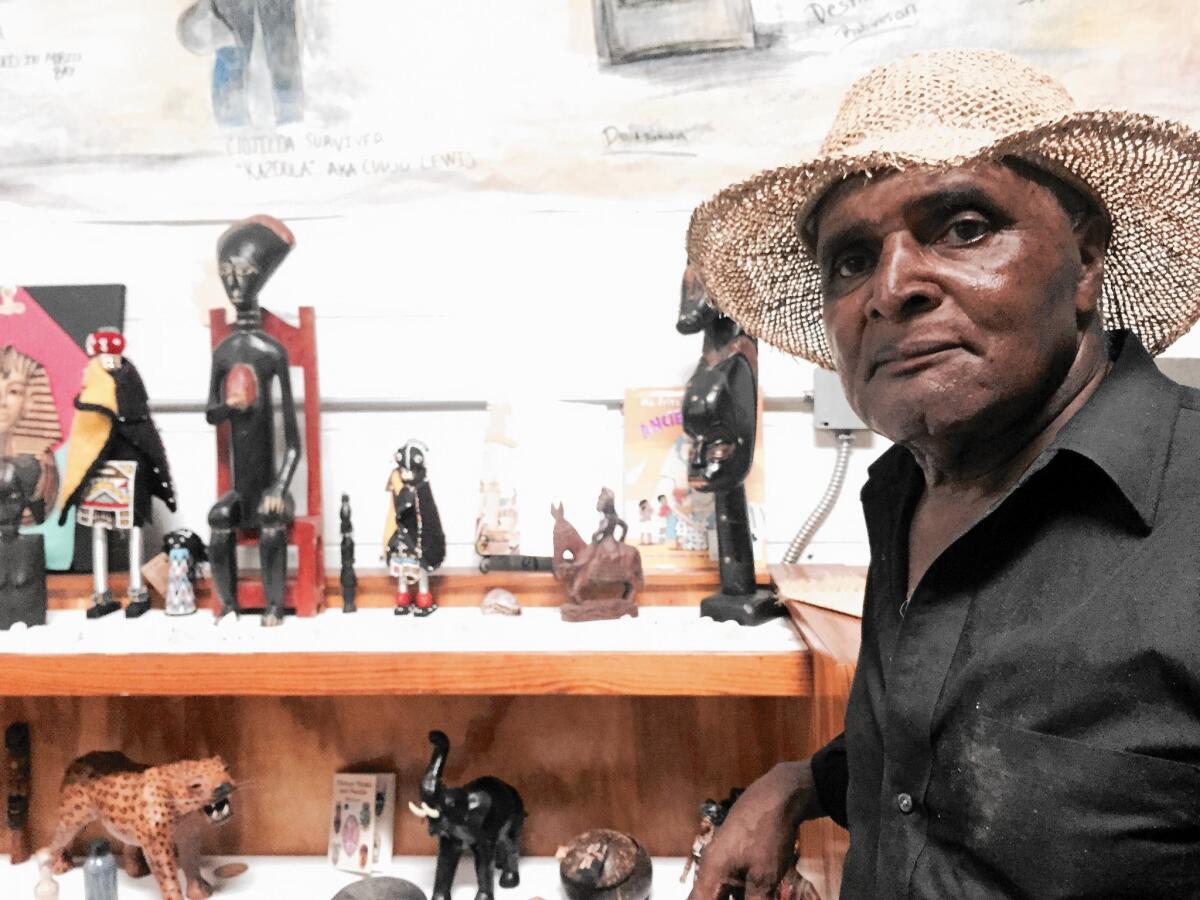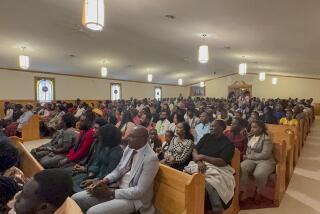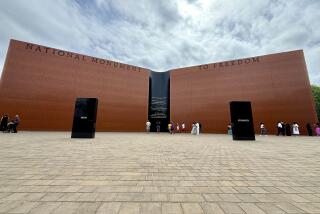American slaves’ origins live on in Alabama’s Africatown

Reporting from AFRICATOWN, Ala. — For miles, north of downtown Mobile, industrial compounds march along the Mobile River. Enormous paper mills, oil companies, shipyards stand shoulder to shoulder. But hidden within them, there’s something much smaller and older: a place called Africatown.
The community is largely forgotten now, a collection of rotting shotgun houses. When it does come up in conversation — when giving directions forces people to reference the Africatown bridge, for instance — Alabamans wince with embarrassment, as though by saying the name out loud they are participating in a ghetto experiment started by racist ancestors. Nothing could be more wrong.
“We remember,” Charles Hope said recently, standing in a small, brick building full of Africatown artifacts. Hope is 72 years old and was born in Africatown. Not at a Mobile hospital, he noted, but “at the house.”
Residents here call the brick building “the den,” and they speak of it with reverence; as the industrial world closes in on Africatown, the den houses evidence of the origins of the community. Hope picked up a photograph with the care most people might reserve for an ancient religious manuscript. “Cudjo,” he said — a silver-haired black man. “Cudjo was one of our top slaves.”
Top slaves?
“Oh, yes. And the last.”
Even though Southern plantation owners held and traded slaves long after, the U.S. Congress made the importation of new slaves from Africa illegal in 1807. But half a century later, the story goes, a wealthy local ship builder named Tim Meaher made a bet over drinks with Northern friends: He could ship a boatload of Africans right into Mobile Bay without a problem.
So in 1859, Meaher’s two-masted schooner, the Clotilde, sailed to West Africa, where the king of Dahomey — now called Benin — sold him 130 slaves, including Cudjo. By the time the Clotilde made it back to the Gulf of Mexico, U.S. federal authorities were on the lookout.
The ship’s captain transferred his human cargo to a riverboat in Mobile Bay and set fire to the Clotilde to destroy evidence of its purpose. From the riverboat, the slaves were distributed to masters throughout the Mobile area. They were freed six years later with the end of the Civil War.
The people brought across the Atlantic on the Clotilde reunited and settled north of Mobile, and called their community Africatown. They spoke their own language, followed their own customs and, above all, worked to stay self-sufficient. They used African gardening techniques, for instance, to feed themselves and their families without depending on anyone outside their small patch of land.
That’s still going on.
After he locked the door to the den, Hope drove his old pickup truck to visit his friends Ronald Perine and Willie Jones. Ronnie and Junebug, people call them. He finds them where they spend all day, most days: on a strip of land under high electrical cables, strung tower to tower across Africatown. Long ago — longer than anyone can remember — the men of Africatown struck a deal with Alabama Power to farm the land under the cables. It provided them food, and saved the energy company the cost of maintaining the land.
The men divided up the strip into half-acre plots, where they farmed corn, peppers, sugar cane and anything else that would grow. Jones has been gardening here for 43 years. He started as a teenager. “This is my food supply,” he said. “I figure I’ve got maybe one or two more good years at it.”
Perine laughed. “You’ve got 10 more years and you know it!”
The sound of a train whistle cut into their conversation, ending any illusion that they were farmers on open land. The electrical cables swayed overhead, and paper mills with their tall smokestacks and strange smells loomed beyond the end of the garden.
Perine shook his head. “It’s been an ongoing fight to keep the big industries out,” he said. Africatown’s residents thought that fight was over in 2012, when the community was placed on the National Register of Historic Places. But last year, he said, they realized otherwise, when the Plains All American oil company arrived to reroute a pipe through Africatown.
“It happened so fast. One day we came out to work, and they had equipment and machines lined up, digging day and night, with security,” Perine said. Residents came out to protest with signs and slogans, but the work went ahead. “That pipeline started way up in Canada. There was no way they were going to let it get stopped in Africatown.”
Cleon Jones grew up in Africatown and went on to play baseball for the “Miracle Mets,” who won the World Series in 1969. He said Africatown’s population was about 4,000 when he was a young man. It has since dwindled to less than half of that, strangled by the industrial complexes that rose up around it.
“As far as I’m concerned they never did anything but dump on us,” he said, listing specific toxic spills that were never cleaned up. The cleanup would have cost the companies too much, he said, so they just closed up and moved on — only to be replaced by new mills and manufacturers.
“There is some good on the horizon though,” Jones said. This month, the Mobile City Council voted to spend $100,000 on a plan to revitalize three neglected areas, including Africatown.
“Ultimately, we want to bring in some tourism,” he said. “We have some real history.”
Travelers, Jones hopes, might visit the burial marker of Cudjo, America’s final African slave when he died in 1935.
The stone bearing his name reads, “Last survivor.”
More to Read
Sign up for Essential California
The most important California stories and recommendations in your inbox every morning.
You may occasionally receive promotional content from the Los Angeles Times.










